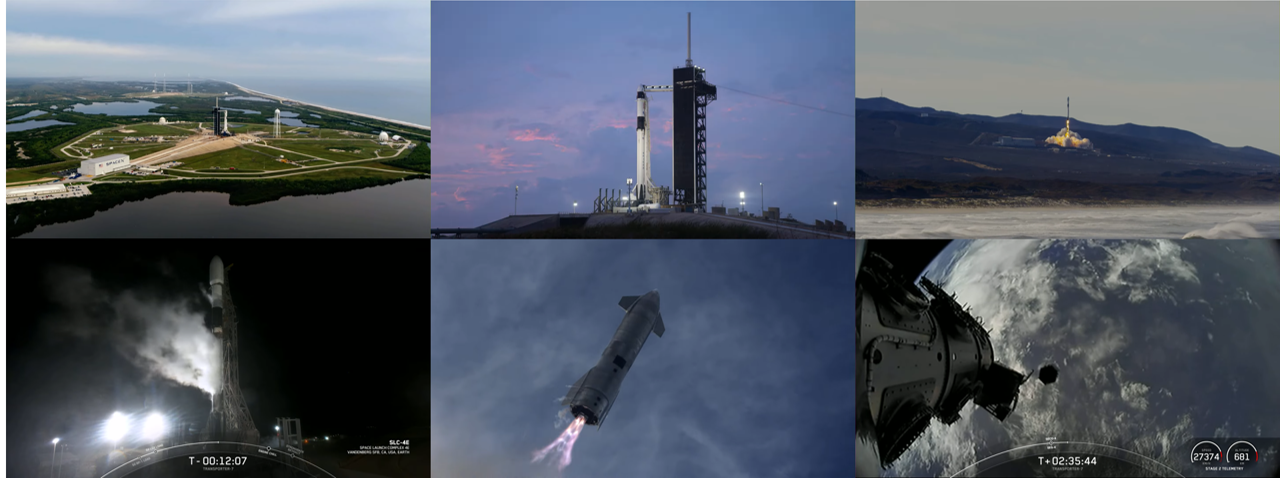Chiribiquete to space | weather blog

The launch of the FACSAT-2 satellite, called Chiribiquete, leads me to think back in 2006, when a multidisciplinary group of officials from various government and private organizations was directed to form the Technical Committee that created the Colombian Space Commission and in just over a year we also agreed to Colombian Space Policy.
The meeting place was the Agustín Codazzi Geographical Institute, in its dependencies in the NQS, whose Director General was chosen to preside over the technical meetings and was its first General Secretary. There, the progressive planning of the organization is developed with the aim of formulating policies and implementing national development programs for space issues, maximizing the contribution of space science and technology in the social, economic, environmental, cultural, communications, defense and productivity fields. And the academy in the country, among other things, in search of our sustainable development, which would allow us to be more competitive.
The creation of the Colombian Space Commission in 2006 coincided with the manufacture and launch of the first satellite made in Colombia, developed by the University of Sergio Arboleda, with the beautiful name Libertad and the last name Promising and Hope 1. Libertad 1 was the result of the application of theories of the CubeSat satellites created in an academic project at my university Stanford and Calpoli, which allowed us to move from desktop projects to real missions in space. On April 17, 2007, at 1:46 AM Colombian time, the first Colombian satellite was launched from the Baikonur Cosmodrome in Kazakhstan and subsequently placed into orbit.
After this groundbreaking experiment, Columbia launched four satellites into space in total; The FACSAT-1 satellite in 2018, the SAOCOM 1B Earth observation satellite in 2020, and the KOMPSAT-7 communications satellite in 2021. Other CubeSats built by Colombian companies have also been launched. Despite the fact that the Colombian Space Commission is being heard less and less, one of its main functions of disseminating space technology among Colombians is not given much attention, since many entities in the country are carrying out a quiet mission, which obviously does not remain static, judging by these The important result of the Chiribiquete satellite, but which requires a much greater spread, among Colombians and among children and young people who still consider space technology to be science fiction, while a few blocks from their schools and universities develop space projects as similar as Chiribiquete.
The FACSAT-2 Chiribiquete satellite is the second Colombian Air Force (FAC) satellite to be sent into space, this time on a SpaceX mission. The launch took place at Vandenberg Space Force Base in California, United States, aboard a Falcon 9 rocket, of that space company’s Transporter-7 mission. The satellite name refers to the Serranía de Chiribiquete National Natural Park, a beautiful nature reserve located between the Caquetá and Guaviare departments of Colombia, which is classified as a Mixed Heritage of Humanity. The Colombian Space Commission (CCE) and the Ministry of Science, Technology and Innovation (Minciencias) of Colombia participated in the satellite project developed by the FAC and the Colombian Space Agency (AEC). The cost of the satellite was approximately 3,400 million Colombian pesos, jointly funded by the government, Ecopetrol, and the Air Force.

The main goal of the satellite is to monitor the country’s natural and cultural resources, deforestation and illegal mining. taking pictures of the territory for scientific purposes, observing Colombian territory to monitor greenhouse gas emissions, and study their effects; Detection of changes in topography and ecosystems resulting from random and illegal cutting of forests, and the impact on lands and coasts and any natural or human action affecting them. The main cargo of the satellite is a photoelectric camera for obtaining data on vegetation, combating deforestation, detecting fires, analyzing water bodies, rivers and critical infrastructure, which will eventually also contribute to regional planning.
With this important mission, we see progress in achieving one of our dreams and goals since we started the Colombian Space Commission 17 years ago, which was supposed to contribute to the country’s development through space technology. Perhaps it is not going as fast as we would like, there are still many things missing, such as the establishment of a government space agency, but progress is being made, and there is no doubt that the path to development in any country is closely related to its ability to use space technology. A lot of effort, knowledge and innovation is needed to continue and continue the space race, in order to contribute to this development that many generations yearn for, and have tried to position as national priorities for a better future.
(visited 90 times, 49 visits today)

“Future teen idol. Hardcore twitter trailblazer. Infuriatingly humble travel evangelist.”




:quality(85)/cloudfront-us-east-1.images.arcpublishing.com/infobae/BNGH73UCKQAZSQPCODUWO2BE5Y.jpg)





